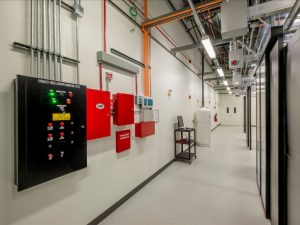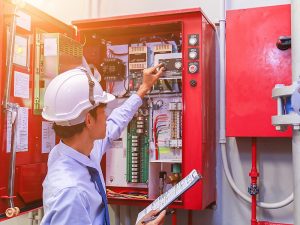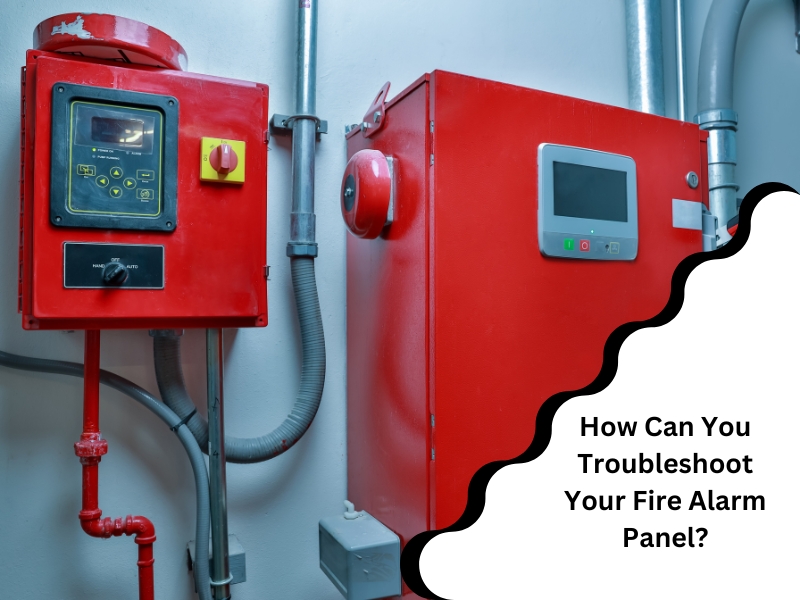A fire alarm system is an essential part of any home or business’s safety infrastructure. It detects smoke, heat, or fire and alerts the occupants, giving them enough time to evacuate the building. However, like any electronic system, fire alarm panels can sometimes malfunction, leading to false alarms or the system failing to activate when needed. Troubleshooting a fire alarm panel is daunting. Still, with some basic knowledge, you can identify and resolve common issues yourself. This guide will walk you through the steps to troubleshoot your fire alarm panel effectively.
What are the common causes of malfunctions in the fire alarm panel?
There are several common reasons why a fire alarm panel might not work as expected. Identifying these issues early can help resolve the problem quickly. Some frequent malfunctions include:
- Power issues: Insufficient power due to electrical faults or battery failure.
- Wiring problems: Loose or damaged wiring disrupts communication between the panel and sensors.
- Faulty sensors: Dirty, damaged, or misaligned smoke or heat sensors causing false alarms or failures.
- Old equipment: Aging systems that may need to be more reliable.
- False alarms: Dust, steam, or insects trigger unnecessary alerts.
How can you identify issues with your fire alarm panel?
To effectively troubleshoot your fire alarm panel, it’s essential to recognize the signs of malfunction. Here are some key indicators that something might be wrong:
- Unusual beeping or chirping: Continuous beeping or chirping often signals a low battery, sensor issue, or panel fault.
- Error codes on the display: Modern panels display error codes that indicate specific issues, such as faulty connections or low batteries.
- “Trouble” or “Fault” messages: These messages indicate a system issue needing attention.
- Frequent false alarms: If your system triggers false alarms, check for sensor problems.
How do you perform basic fire alarm panel troubleshooting?
When it comes to troubleshooting your fire alarm panel, a few simple steps can often solve the problem. Here’s how to start:
- Check the power supply: Ensure the panel is receiving power. If it’s running on a battery, check whether the battery needs replacing. For hardwired systems, inspect the circuit breaker to ensure it’s not tripped.
- Inspect the display: Look at the display screen for error messages or codes. Many fire alarm panels have built-in diagnostics that can help you determine the problem.
- Test the sensors: Use the test function to ensure the sensors are working correctly. Some panels allow you to test the system’s response to smoke or heat in a controlled manner.
- Clear false alarms: If your panel shows a false alarm, reset the system and check for sources that may have triggered it, such as smoke, dust, or steam.

How can you identify faulty connections in your fire alarm system?
Faulty connections can cause significant problems with your fire alarm panel. Here’s how to identify them:
- Loose wiring: Check all wiring connections, especially those connected to sensors and the main control panel. Loose or disconnected wires can prevent the system from functioning correctly.
- Corroded terminals: Inspect the terminals for corrosion or signs of wear. Corroded connections can affect the system’s performance.
- Disconnected components: Ensure that all components, including detectors, control panels, and alarms, are correctly connected. A disconnected component can cause the system to malfunction.
What should you do if your fire alarm panel shows a fault?
If your fire alarm panel displays a fault, here’s how to address it:
- Check for error codes: For guidance on what the error codes mean, refer to the user manual or the manufacturer’s website. Common issues could include battery failure, sensor problems, or communication errors.
- Reset the system: In many cases, simply resetting the panel can clear the fault. Follow the manufacturer’s instructions to reset the system safely.
- Inspect the system for visible damage: Look for any visible signs of damage, such as burn marks, water damage, or broken parts. If you find anything unusual, it’s time to call in a professional.
- Test the system again: After addressing any issues, test the system again to ensure it’s working correctly.
How can you ensure your fire detection panel functions correctly in the future?
To prevent future issues with your fire alarm panel, follow these best practices:
- Regular maintenance: The fire alarm system should be inspected and maintained regularly to keep it in good working condition.
- Replace batteries: If your System uses batteries, replace them at least once a year, even if they seem fine.
- Clean the sensors: Dust and dirt can affect the sensors’ accuracy. Clean them regularly to prevent false alarms.
- Test the system frequently: Test your fire alarm system regularly to ensure all components are working as they should.
- Update the system: If your fire alarm system is outdated, consider upgrading to a newer model to optimize fire alarm performance and benefit from the latest technology and features.

When should you contact a professional for fire detection panel troubleshooting?
While basic troubleshooting can solve many problems, there are times when it’s best to contact a professional. Consider calling an expert if:
- You can’t identify the issue: If you can’t pinpoint the problem or it’s too complex to handle yourself, a professional can diagnose and fix it.
- You’ve found visible damage: If you see signs of damage or wear, it’s best to have a professional inspect the system to prevent further issues.
- Your system is outdated: If your fire alarm system is old or no longer meets building fire safety standards, it’s time for a professional upgrade.
A qualified technician can ensure your system is fully operational and compliant with local regulations.
Keeping your fire alarm panel in top condition
Troubleshooting your fire alarm panel doesn’t have to be overwhelming. By following a few simple steps, you can identify and resolve common issues, ensuring that your system stays functional and reliable. Regular maintenance and timely updates will also help optimise fire alarm performance, keeping your property safe. However, if the issue persists or is beyond your ability to fix, don’t hesitate to reach out to professional fire alarm system services to ensure everything is in top condition.
At YAKKA Technical Services, we provide tailored fire alarm solutions for Dubai’s unique needs. Our expert technicians ensure flawless installation, testing, and ongoing maintenance. Specialising in fire alarm monitoring and detection, we offer advanced features like remote monitoring and real-time alerts. Prioritising safety and peace of mind, we guarantee the reliability and longevity of your system. Contact YAKKA Technical Services today!


